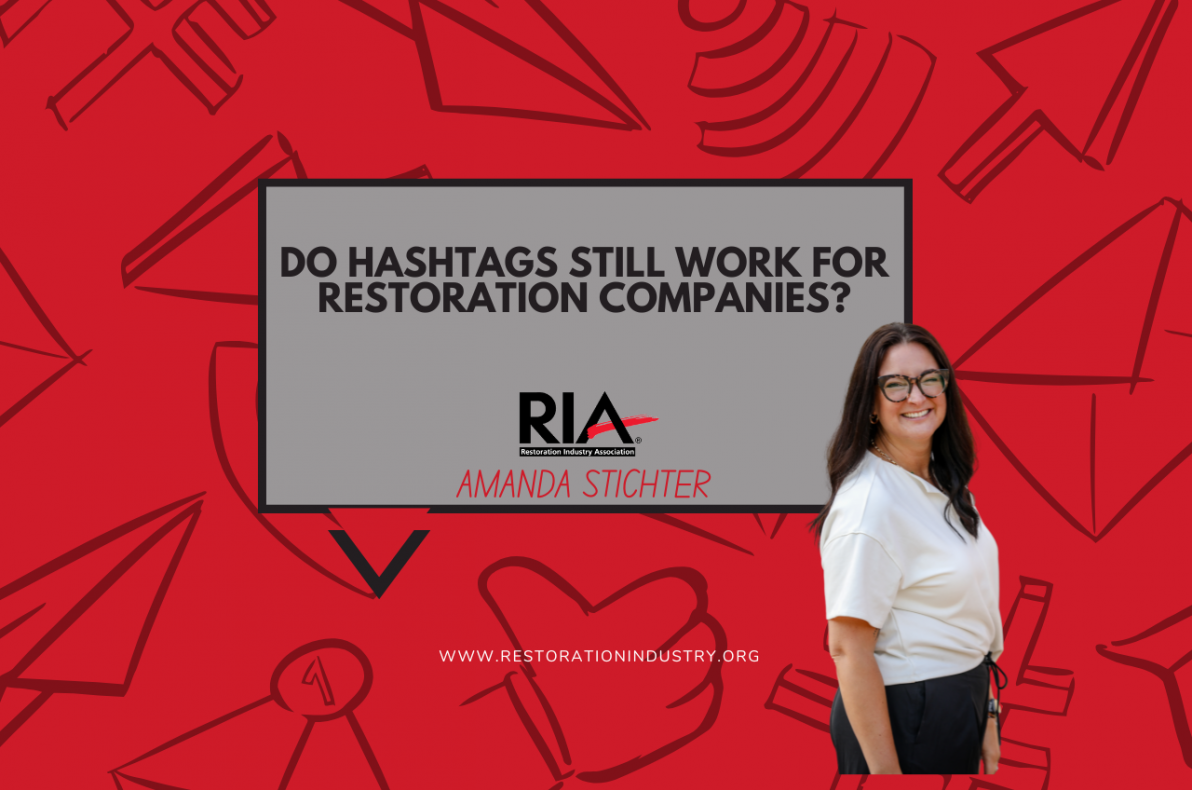Do Hashtags Still Work for Restoration Companies?

In the fast-moving world of social media, one question comes up again and again: Do hashtags still matter? The short answer: only when used strategically. For restoration professionals, hashtags can be a simple but powerful way to expand your reach, connect with potential customers, and highlight your expertise in the industry.
Hashtags are essentially search tools used primarily on social media platforms. They help people find content that matches their interests, whether it’s #WaterDamage, #MoldRemediation, or #ContentsLoss. When used correctly, hashtags:
- Boost visibility by making your content discoverable outside your immediate followers.
- Connect you with local audiences when using location-based tags (#ChicagoRestoration).
- Position your business as an industry expert by showing up in professional conversations (#RIAAdvocacy, #RestorationIndustry).
Why Hashtags Aren’t What They Used to Be
A few years ago, hashtags were one of the easiest ways to get discovered on platforms like Instagram and Twitter (now X). But algorithm changes, pay-to-play advertising models, and shifting user behaviors have reduced their impact. On most platforms today, hashtags by themselves won’t move the needle on traffic or leads.
That said, they’re not completely obsolete. Used in the right context, hashtags can still boost visibility and connect you with the right audiences. So how do you know when it’s appropriate to add hashtags to your content mix and which channels are the best place to use them?
When to Use Hashtags
Not every piece of content or post needs hashtags. Here are some use cases in which hashtags make the most sense for restorers:
- Marketing Your Services: Use hashtags on before-and-after photos, project updates, or community involvement posts.
- Sharing Educational Content: Hashtags like #FireDamageTips or #HurricanePrep connect your advice with people actively searching for solutions.
- During Events or Campaigns: RIA events, local networking, or national awareness campaigns often have dedicated hashtags you can use.
When to Use Hashtags
Each platform uses hashtags a little differently, which impacts how effective they are. Here’s the overall impact of hashtags for the most popular platforms.
- Instagram & TikTok: Hashtag impact is limited but still relevant. A few well-chosen hashtags can still help posts reach people interested in those topics.
- LinkedIn: Hashtag use here has a moderate impact. They help with categorization and can extend reach slightly, especially on professional or educational posts.
- Facebook: Hashtags on Facebook are clickable for search, but they provide very minimal value, as most users no longer search with hashtags on this platform.
- X (Twitter): Hashtags are still most notably used here for real-time events, trending conversations, and live industry updates
How to Use Them Effectively
- Quality Over Quantity: A few relevant hashtags (3–5) perform better than a “wall” of 20.
- Mix Broad and Specific: Pair big tags like #Restoration with niche ones like #BasementFloodCleanup.
- Localize When Possible: Add your city, state, or region (#FloridaRestorers) to target homeowners and property managers nearby.
- Stay Professional: Hashtags should support your brand voice. Skip unrelated or “trendy” tags that dilute your credibility.
Why This Matters in a Slow Season
Hashtags won’t make or break your content - and they should never replace consistent posting, SEO, or paid campaigns. However, especially in seasons where it’s a bit quieter, hashtags can offer a little extra visibility with no added cost. It’s a free, low-effort way to aid in building your brand and nurturing leads until the phone starts ringing again. Pairing hashtags with proper usage alongside consistent posting can help ensure you stay top-of-mind for clients, adjusters, and referral partners.
Hashtags aren’t the silver bullet they once were. For restoration contractors, they’re best seen as a supporting tactic - more like a street sign than a billboard. Use them sparingly, strategically, and always alongside stronger marketing efforts like consistent posting, visuals, and SEO-driven content.
